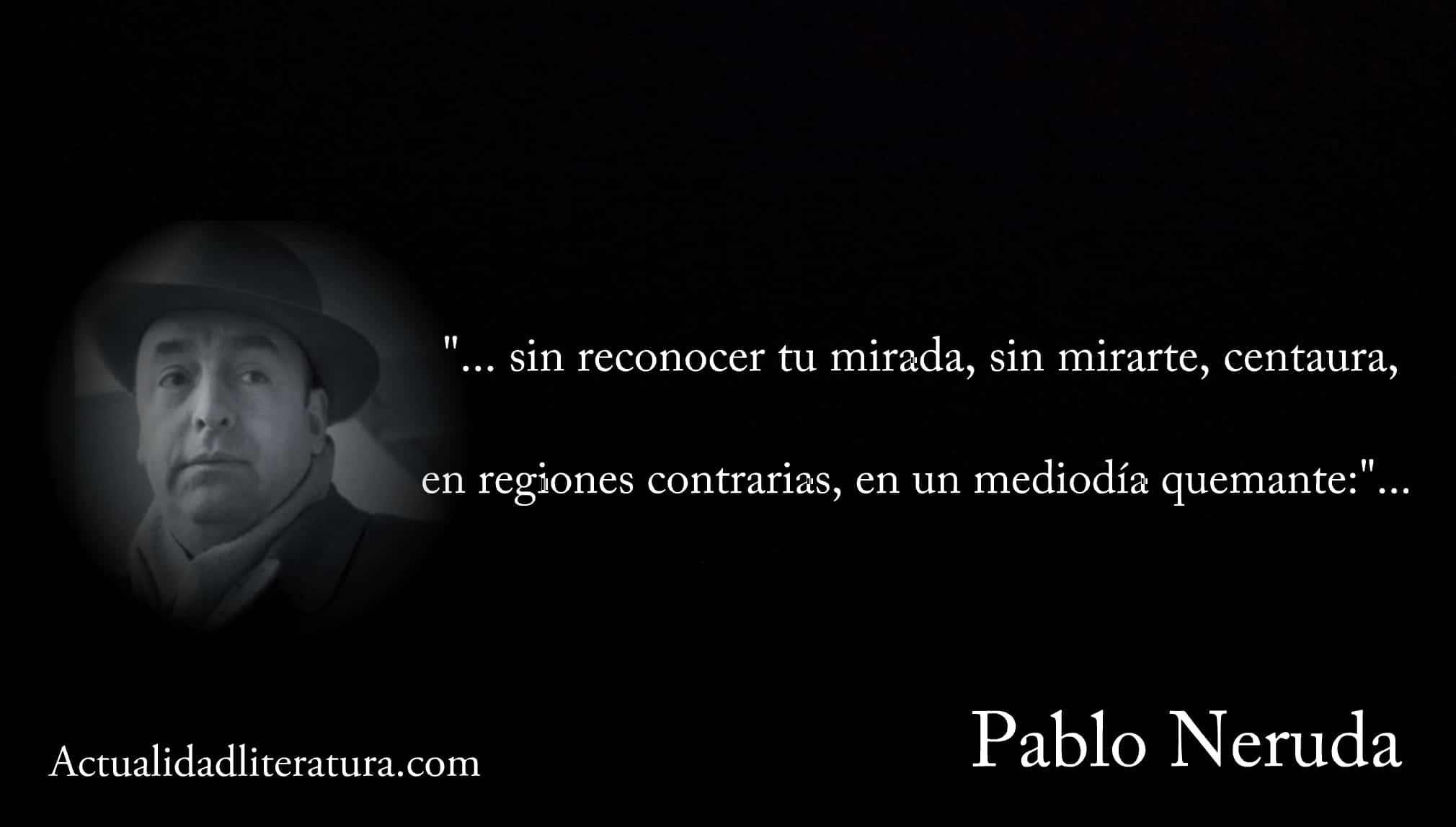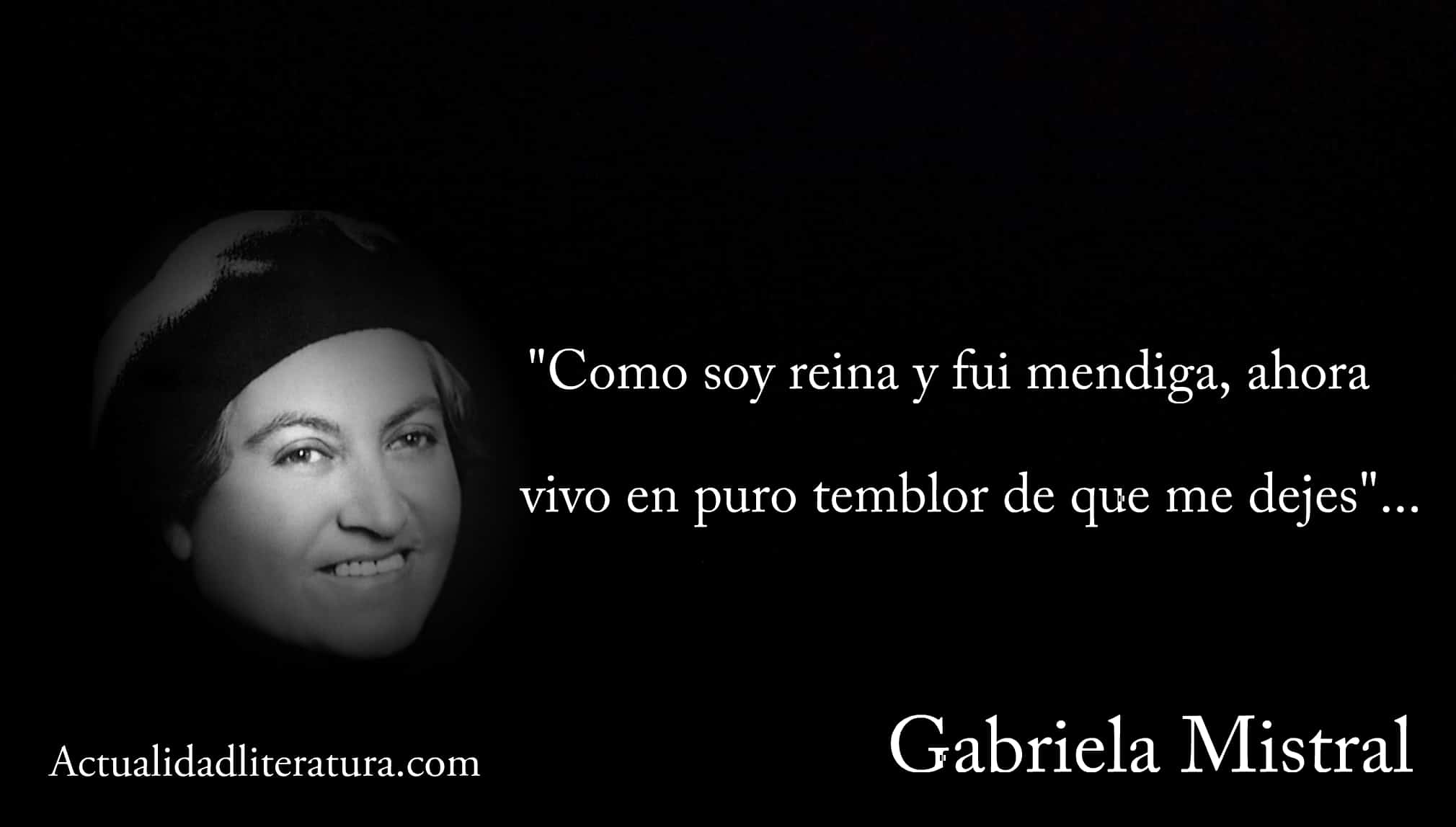
Metonymy in the poetry of Pablo Neruda.
Metonymy or transnomination is a rhetorical figure defined as a phenomenon of semantic change. In it, an object or an idea is designated by the name of another due to a connection of dependency or causality between two elements. These relationships are generally cause - effect. There may also be a container link - content, creator - work or emblem - meaning.
The word "metonymy" derives from the union of two Greek words: f- (meta-) or “beyond”, and ονομαζειν (onomazein) whose meaning is "to name". Together it can be translated as "receiving a new name." For this reason, another of the definitions associated with the word metonymy is “trope that consists of designating the part by the part (pars pro part) ". (A. Romera of the portal Rhetoric). We could qualify it as a demonstration of linguistic creativity. This quality can be greatly appreciated in the different uses that the inhabitants of the towns in the different regions of the world give it.
Differences and similarities between metonymy and synecdoche
Synecdoche and metonymy have quite a few similarities, since, in fact, they use the same device. The only difference is that the synecdoche always originates from a correspondence [content - parts of content] or [the whole and parts of the whole]. That is, applied to the biological sciences, it becomes the relationship between gender and species.
Instead, in metonymy the connection is causal and a substitution occurs. However, in many portals dedicated to literature and the study of language, synecdoche appears as a type of metonymy. This is evidenced in the following sentence: "the swaying of the foam dragged him to the shore." In this case, "foam" can refer to the effect of the waves or a part of it.
Differences between metaphor and metonymy
Although both figures of speech are used to relate two elements, in metaphor the reference occurs between a figurative element and a real one. Consequently, the figured section is not contained or is part of the actual component. For example: when writers use the word "ebony" to describe the brightness and skin color of people of African descent.
Types of metonymy, with examples
Cause by effect
- "The sun affected him." In reference to the heat of the sun or sunlight (dazzled).
- "Party from so much labor." The word "party" refers to excessive fatigue.
- "These gray hair are worth a lot." "Gray" refers directly to the experience acquired by a person because of his age.
- "Stripes are won on the field of play." In this case, "stripes" is a military term (of rank) extrapolated to sport. Commentators often use it to denote the respect or hierarchy obtained by a player or team due to their trajectory.
- "His shirt weighed". This is another phrase widely used by sportscasters. In reality, a player does not weigh his shirt in the literal sense of the expression. The figure refers to a decrease in the expected performance of an athlete when he is traded to a more prestigious team (compared to his previous club).
Effect for cause
- "She has the stripes for the position." The word “gallons” denotes ability (or curriculum). At the same time, "position" refers to a job title, not a chair.
- "You have to go out and earn the potato." The expression "earning the potato" replaces "working."
- "That child is a walking earthquake." In this case, the word "earthquake" indicates the infant's restless and / or mischievous behavior.
Container by content
- "Have a cup." In reference to drinking the contents of a cup.
- "Are you going to eat one or two dishes?" Alluding to the food contained in the dishes.
- "He took a bottle." Indicates that the contents of a bottle were drunk.
Symbol for the symbolized element
- "He swore allegiance to the flag." By "flag" we mean a specific country.
- "The reds dominate Cuba, Nicaragua and Venezuela." The word "red" indicates the characteristic color of governments that are adept at communism.
- "The white house reigned in the Champions for three consecutive seasons". In this case, "the white house" refers to the color of the (local) Real Madrid CF uniform.. In sports jargon, the typical colors or figures present on club emblems are often used as substitutes for the name of the team itself. For example: blaugrana (Barcelona FC), the red devils (Manchester United), the red one (the Spanish team) ...
Author for the work
- "In the exhibition there were several Rembrandts." In reference to several paintings by Rembrandt.
- "Why is there so much yellow in the Van Goghs?" In a similar way to the previous sentence, indicate the paintings of Van Gogh.
- "It took him a long time to read Cervantes." In this case, it can refer to a book or to the complete work of Miguel de Cervantes.
- "Slayer is too heavy for me." The name "Slayer" refers to the music of this rock band.
- "The typical Burton atmosphere." Alluding to the feature films of director Tim Burton.
- "Johnny Deep's trademark histrionics." The sentence refers to the performances of the interpreter.
Instrument by artist or author
- "The most representative pen of magical realism is García Márquez".
- "Messi's left foot is only comparable to Maradona's." In this case, the word "left-handed" refers to his technique of hitting the ball with that leg.
- "Second guitar of the band." The reference is to the person who plays the instrument.
The place of origin for the product
- "I love having a Bordeaux after dinner." In this example, "Bordeaux" refers to wine. In a similar way it happens when words such as: Rioja, Jerez, Montilla, Provenza are used ...
The matter for the object
- "A canvas". Refers to a painting.
- "Motor sport". It alludes to some automobile sports discipline.
- "The tabloids." It is a term associated with performance shows (theater, film or television).

Metonymy in the poetry of Gabriela Mistral.
The name of the object by another close or contiguous to it
- "The collar of the shirt."
The part for the whole
- "The ball pierced the net." The word "net" refers to the goal in soccer.
- "There was no room for a soul in that party" (there was no room for more people).
The whole for the part
- "Polishing the car" (the body shop).
Examples of metonymy in poetry
Fragment of "The poet to his beloved" by César Vallejo
- "Beloved" by the name of her love.
- "Bent timbers" for "lips."
Fragment of "Sonnet 22" by Pablo Neruda
«How many times, love, did I love you without seeing you and perhaps without memory,
without recognizing your look, without looking at you, Centaura,
in opposite regions, at noon burning:
you were just the aroma of the cereals that I love.
- "Centaura" by the name of his beloved.
- "Burning" for "hot."
Fragment of «Desvelada», by Gabriela Mistral
«As I am a queen and I was a beggar, now
I live in pure tremor that you leave me,
and I ask you, pale, every hour:
Are you still with me? Oh, don't go away! »»
- "Trembling" from "fear" or "fear."
Really, our language is so wonderful and has such incredible substance that I am increasingly surprised by the amount of literary resources that I find.
-Gustavo Woltmann.